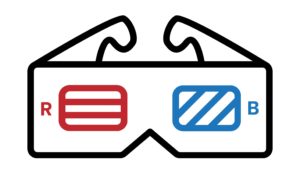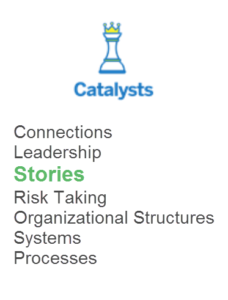 How has your organization’s training and development strategies changed in the past ten years? During this same period, “digital and mobile” have caused a breathtaking shift in how customers, employees and organizations access, consume and contribute to the expanding ecosystems of knowledge.
How has your organization’s training and development strategies changed in the past ten years? During this same period, “digital and mobile” have caused a breathtaking shift in how customers, employees and organizations access, consume and contribute to the expanding ecosystems of knowledge.
Early iterations of the Complexity SpaceTM Framework (CSF) were piloted during engagements for organizational “learning and knowledge management” strategies. We have consistently based our work on the premise that complex human systems –organizational ecosystems– are non-linear; that is, they don’t operate in strict “cause and effect,” “do this and that is guaranteed to happen” ways. Rather they operate over time in larger patterns, patterns that can be identified, analyzed, and influenced – though not necessarily with the results we intend.
Before the Red Lens and Blue Lens Paradigm
 Although we had not yet formalized our two distinct yet complementary paradigms in the CSF, (“Red Lens” and “Blue Lens” Paradigms), we helped clients to see the explicit differences in learning processes that were governed by the rules of each. The Red Lens Paradigm underlies many widely accepted learning processes. The foundation of that set of beliefs is that learning is a linear process, governed by the rules of cause and effect. As a result, teaching a person is like fixing a machine. Figure out what is needed. Follow the instruction manual. Get results. Repeat when needed.
Although we had not yet formalized our two distinct yet complementary paradigms in the CSF, (“Red Lens” and “Blue Lens” Paradigms), we helped clients to see the explicit differences in learning processes that were governed by the rules of each. The Red Lens Paradigm underlies many widely accepted learning processes. The foundation of that set of beliefs is that learning is a linear process, governed by the rules of cause and effect. As a result, teaching a person is like fixing a machine. Figure out what is needed. Follow the instruction manual. Get results. Repeat when needed.
In direct contrast to a mechanistic approach, we introduced the metaphor of an organization as a garden where the outcomes were emergent and continually influenced by any number of factors (weather, soil quality, seeds, fertilizer, experience of the gardener, etc.). Gardens are always changing and “the practice” of growing and cultivating is continual.
Seen through the “Blue Lens” Paradigm, this point of view emphasizes that what is “learned” and continually adapted is infinitely more complex than what is “taught.” We focused on the connections, relationships and exchanges between individuals, teams, functions, organizations, communities, or societies as a complex process – one governed by different principles than are typically associated with traditional training and development. (In the CSF, we have defined these overarching conditions as “Meta Patterns” that span the core elements of the Complexity Space™ Framework)
Learning within an organization is as complex as the rapidly changing forms of information resources and engagements. Developing learning and development strategies refocus the learning approach to create a synergy between the system and individual to adapt to emerging fundamentals/changes in their ecosystems(environments). We encouraged clients to accept that learning is not solely about finding a fix.
The Myth of the Permanent Fix
Many organizations approach their training and development programs as fixes for their mounting business challenges. For most organizations, the time and resources available to design and implement a program that results in a permanent fix is not a viable business strategy in complex business environments.
We believe that permanent fixes are a myth. So how does the CSF”s approach to learning focus on acquiring, adapting and applying the “fix that fits” now to help productivity, profitability and employee development?
 For purposes of this discussion, we will jump ahead to the point in the project where we have already identified gaps in existing program effectiveness and are going to begin to introduce “Catalysts” as the primary change stimulant for the retooling of the T & D strategy.
For purposes of this discussion, we will jump ahead to the point in the project where we have already identified gaps in existing program effectiveness and are going to begin to introduce “Catalysts” as the primary change stimulant for the retooling of the T & D strategy.
As we were developing the Complexity SpaceTM Framework, we described Catalysts as “levers” that people interested in influencing complex systems could push, pull and pivot to perturb the system’s current patterns.
Although “levers” is a familiar mechanical term, we believe that the concept of a chess piece, specifically the queen, more accurately represents the act of making moves that create intentional shifts in patterns. We selected the queen to represent Catalysts because it has the greatest number of possible moves available to it.
Tell me a Story
Helping clients shift their training strategies to focus on the learning process itself rather than any specific subject being taught has never been easier. First and foremost is the change in the availability of information and knowledge repositories, interactive learning environments and software, facilitators, experts and peers willing to engage and collaborate; and learners as co-creators who add their feedback and experience for real-time application. As each student forges their own path by polling and engaging with the best resources and most useful guidance to address their unique learning needs, how does the organization leverage this learning throughout the organization?
Ask for a Story
When you ask for a story, you are inviting a deeper level of input and diverse perspectives. Ask for a story to find out how someone (or a team) solved a problem when no one else could. Ask for a story to let employees know that you are listening and that what they share builds new insights and “linkages” throughout the organization. Ask for a story to learn something new.
We have found that stories are one of the most powerful ways to link individual and group behaviors contextually to learning. Learners want actual experiences with what they are being asked to learn as much as they want the correct “answers” to the questions. When we were told by the Chief Learning Officer of a large organization that “Employees aren’t listening to us any more, they’re listening to each other, so what do we do?” we were ready to respond.
We worked through a familiar training design and suggested a few easy alterations:
- As you identify the need for training, ask everyone who will be included in the training to (tell a story) describe their top training class or program experience.
- Specify desired outcomes to include both immediate and longer term employee (learner) engagement with the content/skill development. Link outcomes with both how participants apply and share what they have learned.
- Design training options that deliver flexible access and learning paths, with active networks for open engagement. Reward active engagements and contributions with special attention to employees who add resources, ideas, and stories for how the learning was applied, adjusted, changed etc.
- Use participant assessment differently by getting immediate feedback for the program by asking no more than 5 questions. In order to get “credit” for the program ask participants to share how this training has shifted a behavior or action in their work or personal time.
What patterns changed for our client? Lots –remember, when you change one aspect of an interconnected, complex system the rest of it will most likely change in some way as well. For the client, training was integrated into weekly micro- learning opportunities that became known as “show and tells” with employees taping the sessions for those who could not attend. Employees not only requested more and new training, they often suggested fellow employees as “teachers.”
We know that stories are one of the most efficient and powerful ways to generate motivation for change — and isn’t learning really about learning how to change?
So who was listening to who?
We hope you will share your stories, questions and even disagreements with our articles because that is the only way we can continue to make sure Complexity Works!

Leave A Comment